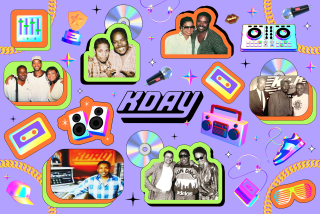Hams Hit the Airwaves for Annual Field Day
- Share via
From an abandoned missile site, radio operators worked through the night Saturday and into Sunday morning, tapping out code or making verbal contacts with other operators scattered across the United States and Canada.
It wasn’t a Cold War relapse. It was amateur radio operators, also known as hams, participating in an annual ritual--Field Day--a 24-hour period when hams from all over North America hit the airwaves.
“It’s a real challenge to sit there and be able to tell which station you want to talk to,” said Richard Donner of Newhall, a member of the San Fernando Valley Amateur Radio Club, listening to the tones of dots and dashes in a shack at the former Nike missile site in the Santa Susana Mountains.
Field Day is an annual contest among North American radio clubs to determine which could contact the most stations in a day.
By the time the event officially ended at 11 a.m. Pacific time Sunday, local club members estimated they had made more than 1,000 contacts. But the winner of the contest--sponsored by the American Radio Relay League--will not be known for four or five months.
Although the hams pursued the contest seriously, they admit they were mostly involved just for the fun of it.
“Last night we had a potluck,” said club president Bill Stein. Forty or 50 members, ranging in age from 11 to 80, gathered together to eat lasagna, meatballs, cakes and pies at the missile site.
Some club members slept in shifts, others stayed awake through the night, like Howard Barnes, a 77-year-old retired police officer from Canoga Park.
“Gatorade and coffee” kept him going, Barnes said.
The San Fernando Valley club had three radios in the contest, two transmitting Morse code and one for voice transmissions. Additionally, they had a radio reserved for holders of the beginning, or novice, license.
When the local club members contacted another station, they simply transmitted their call sign, W6SD, followed by 3A to designate they had three stations, and then LAX, to give their region. There was little idle chatter--once the contact was confirmed, it was on to the next call.
By morning, the formality was loosening to the point that some operators confirming a contact added: “Good luck with the contest,” Stein said.
“The ones who are experts can drop in and get you exactly where you are listening, give a message and be gone before anyone knows what is happening,” Donner said.
More to Read
Sign up for Essential California
The most important California stories and recommendations in your inbox every morning.
You may occasionally receive promotional content from the Los Angeles Times.













